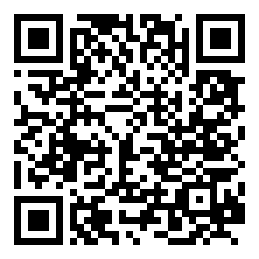Designing for Restaurants
If you ever have the fortune of working for a restaurant, you will have to think in a different way.

Featured Contribution
Working for a restaurant is not the same as working for companies that offer other types of service. I will tell you my experience and some things I have discovered when I got involved in the process of designing for a restaurant chain. In the end, I was invited to create their image department inhome.
If you get the wonderful opportunity to work for a restaurant, feel yourself lucky. It is a challenge of epic proportions . Why is it so different? Simply, the restaurant industry depends on their daily sales. It cannot go a day without selling. It cannot afford not opening on holidays. They can control their kitchen, but not the clients' choices. Their products are not exposed on a shelf. They have to be chosen by emotions.
You can control the fate and success of some of their dishes, or, if you are creating from scratch, you must be very careful. There are many graphic needs inside a restaurant. The most important are:
- Image, logo
- Menu
- Photographs (Product Shot)
- POP
Image
When creating a brand for a restaurant you must watch for tendencies and, above all, the cooking style that will be applied. You must invest your time in going to similar places, take pictures, steal their menus!1 See how the waiters dress, how drinks are served, how the cutlery is placed. All this has to give you a clear idea of how to create the brand.
Do not just submit the logo and its applications. Take samples of how the tables should be set, look how to add the brand so it is shown in a mantelleta, think of some inventive glass for the drinks, suggest the colors for the tablecloths, etc. Since your brand will work efficiently within the context of the restaurant, both need to speak the same language, use the same colors and perceive in the same way.
Menu
Believe me, it is a very delicate process, and the most important in our exercise. A menu does not sell by itself, but it needs to help to the suggestion, it is a tool for the waiter, who, after all, is a salesman.
Here you need to get involved with the kitchen. There is something you always have to take into account: a costs control of each dish has to be kept track of. For instance: if a pasta is sold in $150.00 and its cost is 45%, it is a product that does not leave too much profit to the restaurant, in contrast to one that costs 30%. Knowing this, you can evaluate and make a list of the dishes with the best cost on top and even select the picture to include inside the menu. Do not be put off by the «prettiest» dish but by the one which is the most profitable.
Work the menu by separate sections. Entrances, Soups, Salads, Pastas, Cuts, Seafood, Combinations, Desserts and Drinks. That is, start with a research on the entrances (which one has the best profit) and rank as appropriate before going through the following section. The design comes by default. What is interesting is that you can deliver a very well designed menu and, above all, a most efficient selling tool.
Pictures
I know that in many trendy restaurants («Bistros») the menus are merely typographic, but the truth is, it is not a law. It is possible for this kind of menu to be asked for, but what you cannot set aside is the picture of the dishes: suggest it, fight it over. Believe me, it is 100% effective. We have it checked that a product which had a good cost was not sold so much only because of its name or description. When we included its picture in the menu, the sale rose significantly (approximately 10 times).
Get involved in the taking of pictures: even though you are not taking them, you have to be in the photo shoot of the products. The pictures must be taken from the sight of the costumer, in 45º (never do zenith shots). Suggest the use of background elements, such as ingredients of the dish or things that reflect its processing. Demand good color and volume. They have to look tasty.
POP
There are simple things that can help to sell, and they are called tent cards or table tent. They may be acrylic, cardboard, etc. The important thing is to use photos of a product to suggest a dish. In case your client demands a menu without pictures, this is the perfect platform to illustrate the costumer and help them with their choice.
I could go on and on about this, but I think that if you present a full package design with all these items, you will reach the best results with your client. A last advise: taste your client. Suggest a tasting, try their dishes, take notes of their flavor. All this will help you in the creative process.
Boost your career
Don’t just stop at reading. Discover our updating and specialization programs to take your professional profile to the next level.
View Academic OfferShare
Please value the editorial work by using these links instead of reproducing this content on another site.

- I mean to study it, take pictures of it, and fully read it.
Topics covered in this article
What do you think?
Your perspective is valuable. Share your opinion with the community in the discussion.
Comment now!



